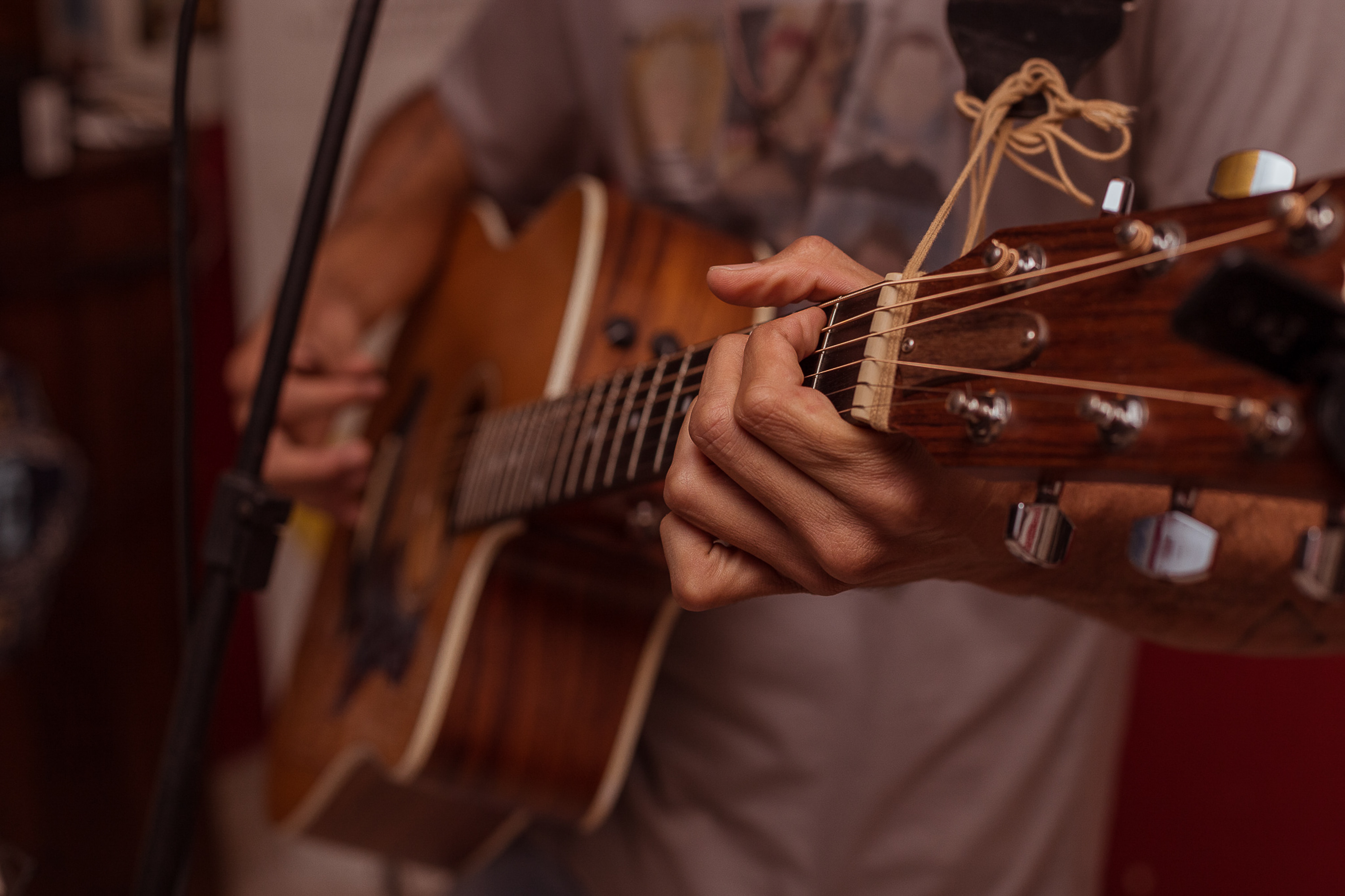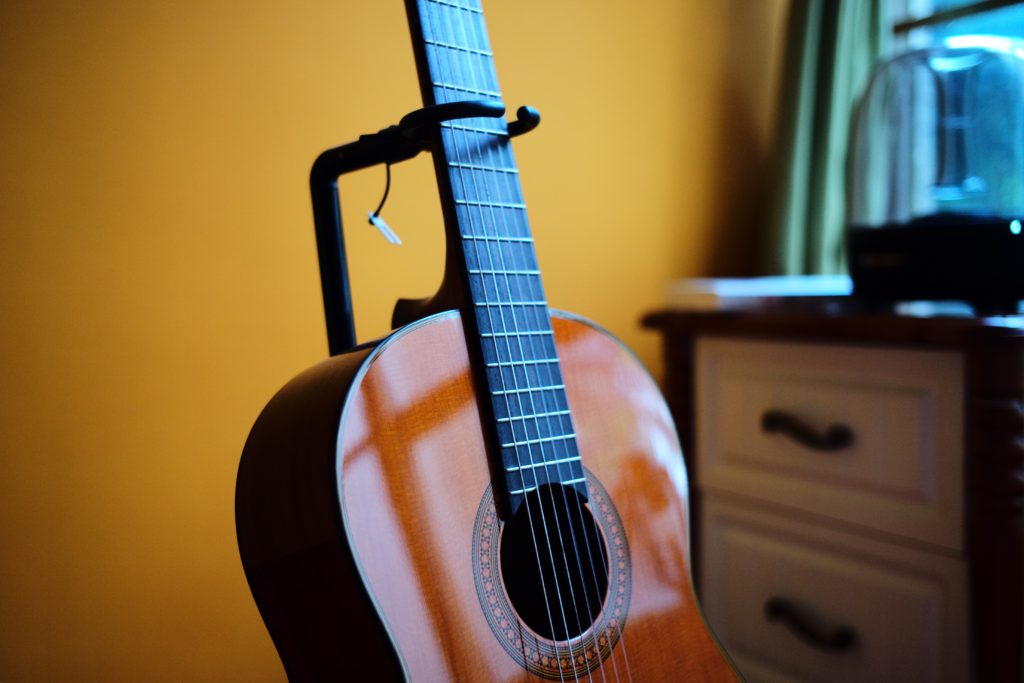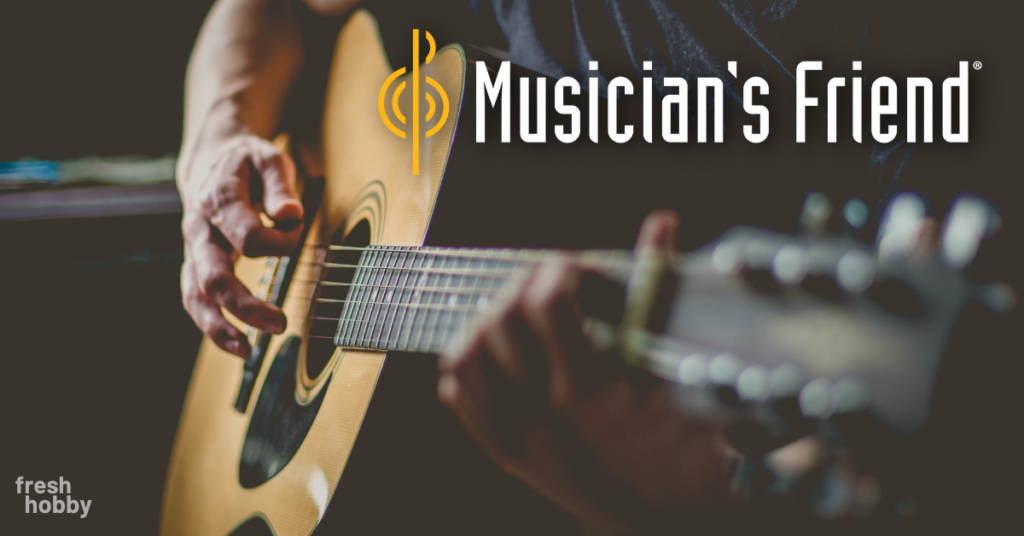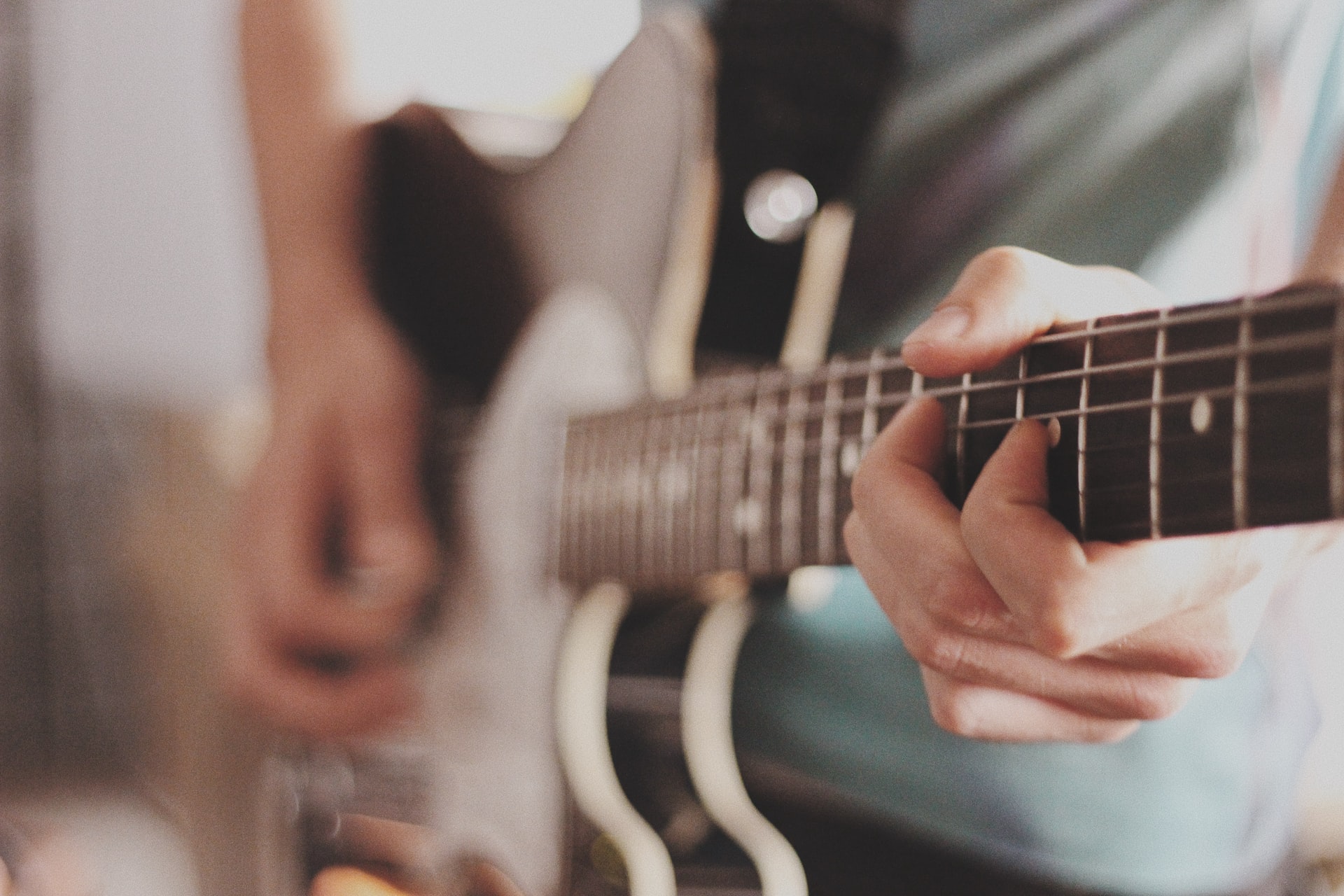Learning to play the guitar is a lifelong, creative hobby with little barrier to entry for people of all ages!
If you have music in your heart and want to let it out, the guitar is a great instrument to pick up and learn today.
With half an hour of practice a day, you could be strumming and playing your favorite songs in just a few weeks!

Acoustic or Electric?
So you want to learn to play the guitar?
One of the first decisions you’ll need to make is whether you want to start with an electric or an acoustic guitar. Most players will tell you that the best way to begin is with an acoustic or “dreadnaught” guitar. You know, the wooden ones.
Starting with an electric guitar will be easier on your fingers, but is also a more expensive option to begin as you will need to purchase more gear to start including, amps, pedals, cables etc…
Starting to learn the guitar with an acoustic may be rougher on your fingertips, but offers the most simple entry for beginners.

Acoustic guitars come in various shapes, sizes and models, but an acoustic guitar is essentially the most basic guitar you can purchase.
No bells, whistles or whammy bars to get distracted with while you’re learning the basic chords and scale structures.
Another less common option, would be starting with a classical or nylon string guitar, as the strings are easier on your fingers tips and you can practice more from the start.
That said, we recommend starting with a basic steel-stringed acoustic guitar.
Purchasing a Guitar…
Once you’ve decided you want to learn to play guitar, the obvious next step is to purchase your guitar. This can be a daunting task given the variety and price range of guitars.
If you have a friend who plays, ask them to come along with you to a local music shop or Guitar Center and have them help you pick out a few to try out.
We recommend getting your hands on a bunch of guitars before purchasing, so you know what feels comfortable and what style/look catches your eye.
If you do have a friend to come along, have them play the guitars as well, to get an idea of how they’ll sound once your skills have progressed.
We recommend shopping online first to get an idea of what prices may be like at the store.
There are many “starter-packs” available online that come with everything you’d need to begin including guitar, case, strap, capo, extra strings, picks, tuner etc… There are a few good options out there including this Fender Pack…
Once you have an idea of what you’re looking for, check out a local music store, Guitar Center or Craigslist to make your purchase.
Local stores may not be as encouraging with touching everything, so keep that in mind as you shop!

If you decide to buy used, make sure to bring someone who knows guitars with you to check for possible damage.
Some main things to look out for are any major cracks on the body or neck of the guitar.
Starting out, you shouldn’t need to spend more than a couple hundred dollars on the guitar. A $300 acoustic guitar to start is more than enough to learn on and cut your teeth.
That said, spending less than a hundred dollars may leave something to be desired in quality and the guitars ability to stay in tune.
Open Chords
The photos above may look confusing but are actually quite simple when you learn what you’re looking at. These photos show us how to play and configure “open chords“.
These are chords that most singer-songwriters will strum while singing their songs.
In the diagram above, imagine that you are looking at the guitar head on, in an upright position.
The thick horizontal line at the top is the “nut” or the top of the fretboard.
The horizontal lines are the frets going down the fretboard.
The six vertical lines are the strings.
The vertical line on the left is the low E string (thickest string), and the vertical line on the right is the high E string (thinnest string).
The dots indicate where to put your fingers.
The numbers indicate which finger to use.
Your index finger is 1, middle 2, ring 3, and pinky is 4 on both your right and left hands.
The X at the top indicates to NOT hit that string.
The O at the tops indicates that you hit that string “open”.
Standard Tuning = E A D G B E
String Numbers = 6 5 4 3 2 1
Whew… That feels like a lot, but once you get the hang of it you are well on your way to learning basic open chords to strum along with your favorite songs.
Most songs on the radio, are only 3-4 chords.
Strumming with the three chords above C, G, and D you can play thousands of songs.
Check out our “unboxing” and demonstration of the Bristol BM-15 Guitar here. This is a great budget acoustic guitar, with a slightly smaller body and neck making it great for beginners.
Recommended Links:
- Guitar Capo Standard (Amazon)
- Snark Guitar Clip-on Guitar Tuner (Amazon)
- Acoustic Guitar Stand (Amazon)





